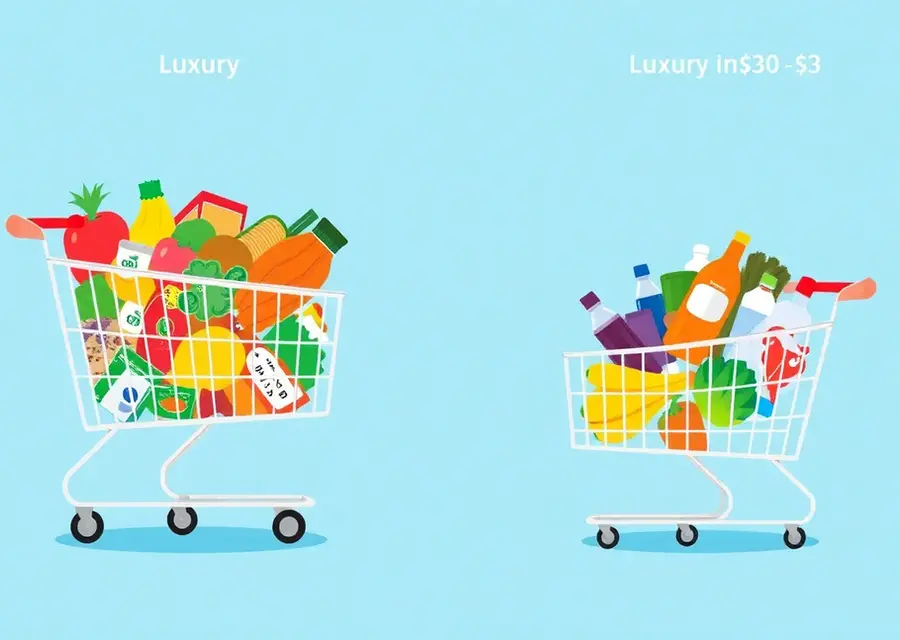New GST Reforms: What Becomes Cheaper and Costlier in 2025?
- THE MAG POST

- Sep 5
- 4 min read

Diwali is almost here, and good news has arrived for the common people. The GST Council has made a big decision in its meeting, which will bring relief from inflation. In this meeting, a major decision has been taken on GST reforms, which will benefit the public immensely. From now on, several items will become cheaper, and some will become more expensive.
GST Reform: Decoding Price Shifts for Consumers and Businesses
The recent Goods and Services Tax (GST) council meeting has brought about significant changes that will impact the cost of everyday items and business operations. These reforms, aimed at streamlining taxation and potentially boosting revenue, have generated considerable discussion regarding their implications for both consumers and the corporate sector. Understanding these shifts is crucial for making informed purchasing decisions and adapting business strategies.
Shifting Tax Brackets: What's In and What's Out
A key outcome of the GST council's deliberations is the redistribution of items across different tax slabs. Several essential goods, particularly those related to agriculture and daily consumption, have seen their tax rates reduced, with some even moving to a zero-tax bracket. This move is expected to offer some relief to the common man, making a range of products more affordable.
Conversely, certain luxury items, specific services, and even some previously untaxed or lower-taxed goods will now face higher GST rates. For instance, some processed food items, certain electronic components, and specific services might see an increase in their final price. The council has also introduced a notable 40% tax rate on specific products, the rationale for which is likely tied to discouraging consumption or aligning with international tax structures.
Impact on Key Sectors: Agriculture and Medical Supplies
The agricultural sector, a cornerstone of the Indian economy, appears to be a major beneficiary of the revised GST structure. Many farm-related inputs and processed agricultural products are now subject to significantly lower taxes, a move that could potentially reduce costs for farmers and make agricultural produce more competitive. This could also translate into more affordable food prices for consumers in the long run.
Medical supplies and equipment have also been a focal point of the GST reforms. While specific details on rate changes for all medical items are still being disseminated, there's an indication that certain critical medical goods might see adjustments. The goal is often to balance affordability for healthcare access with the revenue needs of the government, a delicate act that the council continually navigates.
Understanding the New Tax Landscape
The introduction of a 40% tax rate on specific items warrants closer examination. While the exact list of these items is still being finalized or has been selectively released, such a high rate typically targets goods considered non-essential or those with potential negative externalities, like certain tobacco products or luxury consumables. Businesses dealing with these items will need to meticulously re-evaluate their pricing and supply chain strategies.
For businesses, the GST reforms necessitate a thorough review of their product portfolios and tax compliance procedures. Understanding which items fall into which revised tax bracket is paramount to avoid penalties and ensure accurate pricing. The changes might also present opportunities for businesses that can adapt quickly to the new tax regime, potentially gaining a competitive edge.
Navigating the Changes: Consumer and Business Strategies
Consumers should stay informed about the specific price changes for the goods and services they regularly purchase. Tracking announcements from the GST council and major retailers will be key. Prioritizing purchases of items that have become cheaper and potentially delaying or re-evaluating purchases of items that have become more expensive can help manage household budgets effectively.
Businesses, on the other hand, must proactively engage with these changes. This involves updating accounting software, training staff on new tax codes, and potentially renegotiating contracts with suppliers and distributors. A strategic approach to inventory management and sales forecasting will be vital in navigating the evolving market dynamics brought about by these GST reforms.
Key Takeaways: Adapting to the Evolving GST Framework
The recent GST reforms signal a dynamic approach to taxation in India, aiming to balance economic growth with consumer welfare and revenue generation. While some items become more affordable, others face increased tax burdens. Both consumers and businesses must remain vigilant and adaptable to effectively manage their finances and operations within this evolving tax landscape. The long-term success of these reforms will depend on their smooth implementation and their impact on the broader economy.
Item Category | Previous GST Rate | New GST Rate | Impact |
Agriculture-related goods | Varied (e.g., 5%, 12%) | Reduced rates, some zero-tax | Cheaper for farmers and consumers |
Certain processed foods | Varied | Increased rates (e.g., 18%) | Potentially more expensive |
Specific services | Varied | Adjustments expected | Impact depends on the service |
Luxury/Non-essential items | Varied | Higher rates, some 40% | Significantly more expensive |
Medical supplies | Varied | Adjustments expected | Aiming for balanced affordability |
From our network :
Pandas DataFrame Indexing: .loc vs .iloc vs Chained Indexing
Docker Compose Postgres Connection: Troubleshooting and Best Practices
Python Mortality Model: Simulating Age-Based Death Probability
NASA Astronauts Arrive Safely at International Space Station
5G Revolution: Transforming the Digital Landscape with Lightning-Fast Internet Speeds
















































Comments